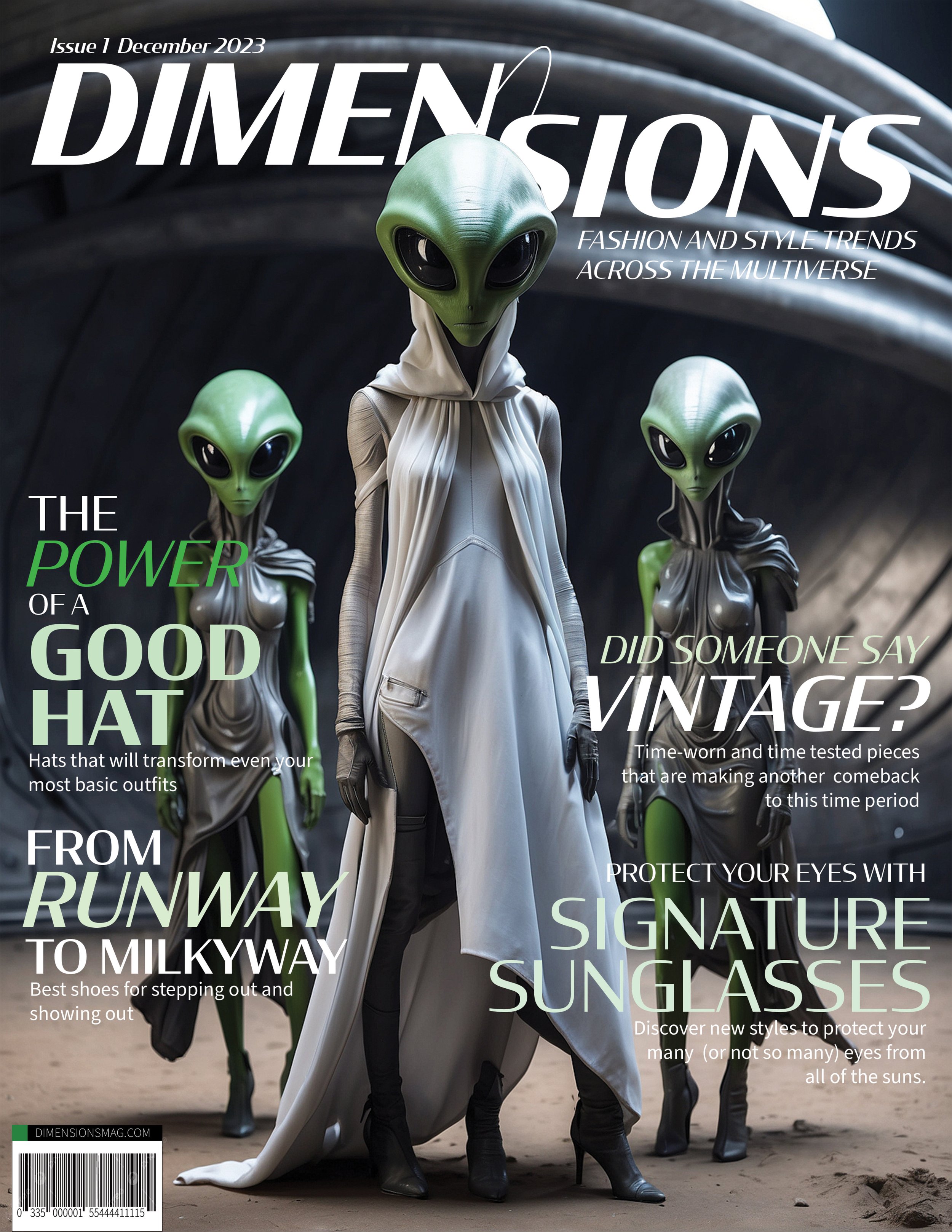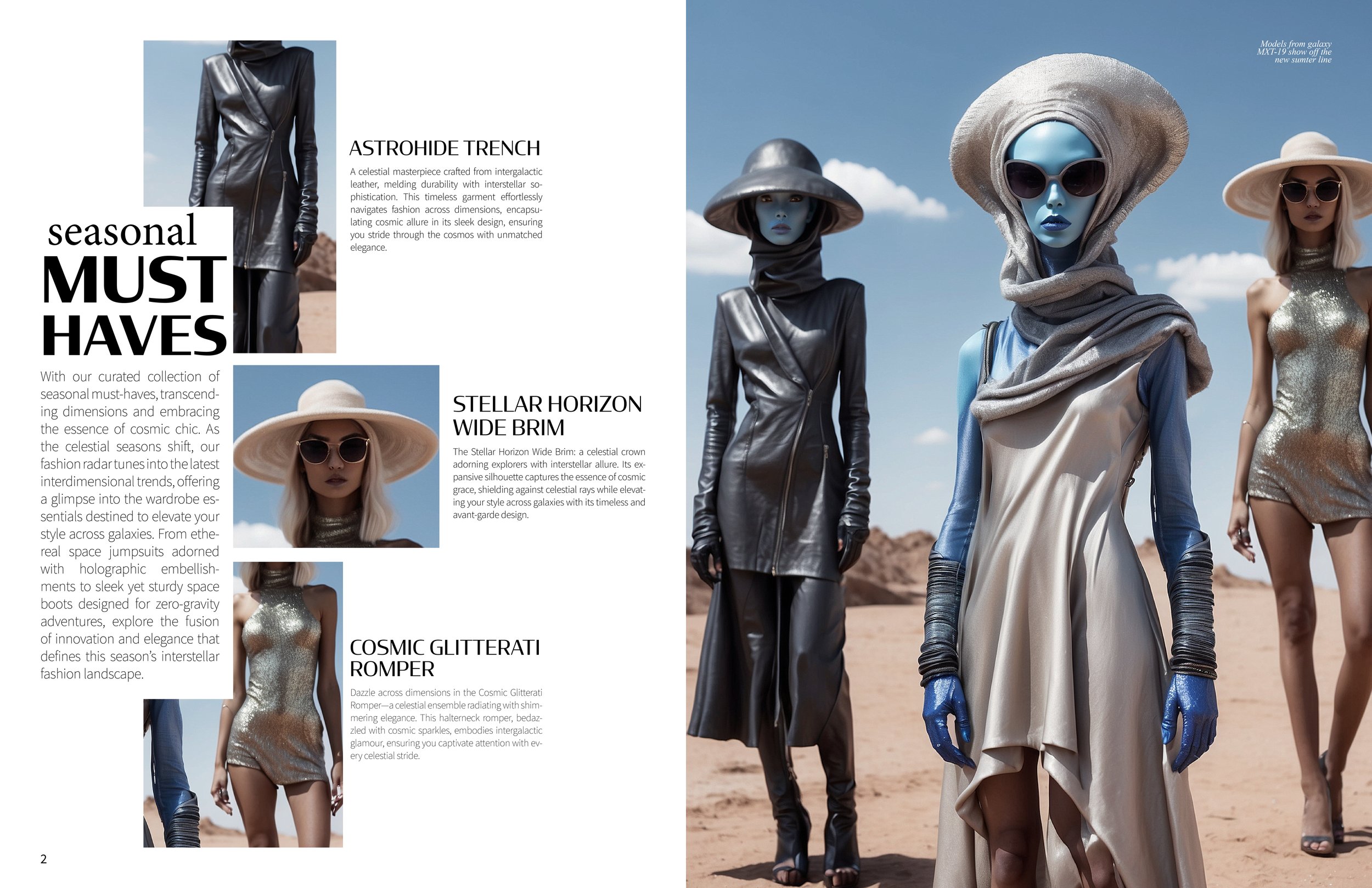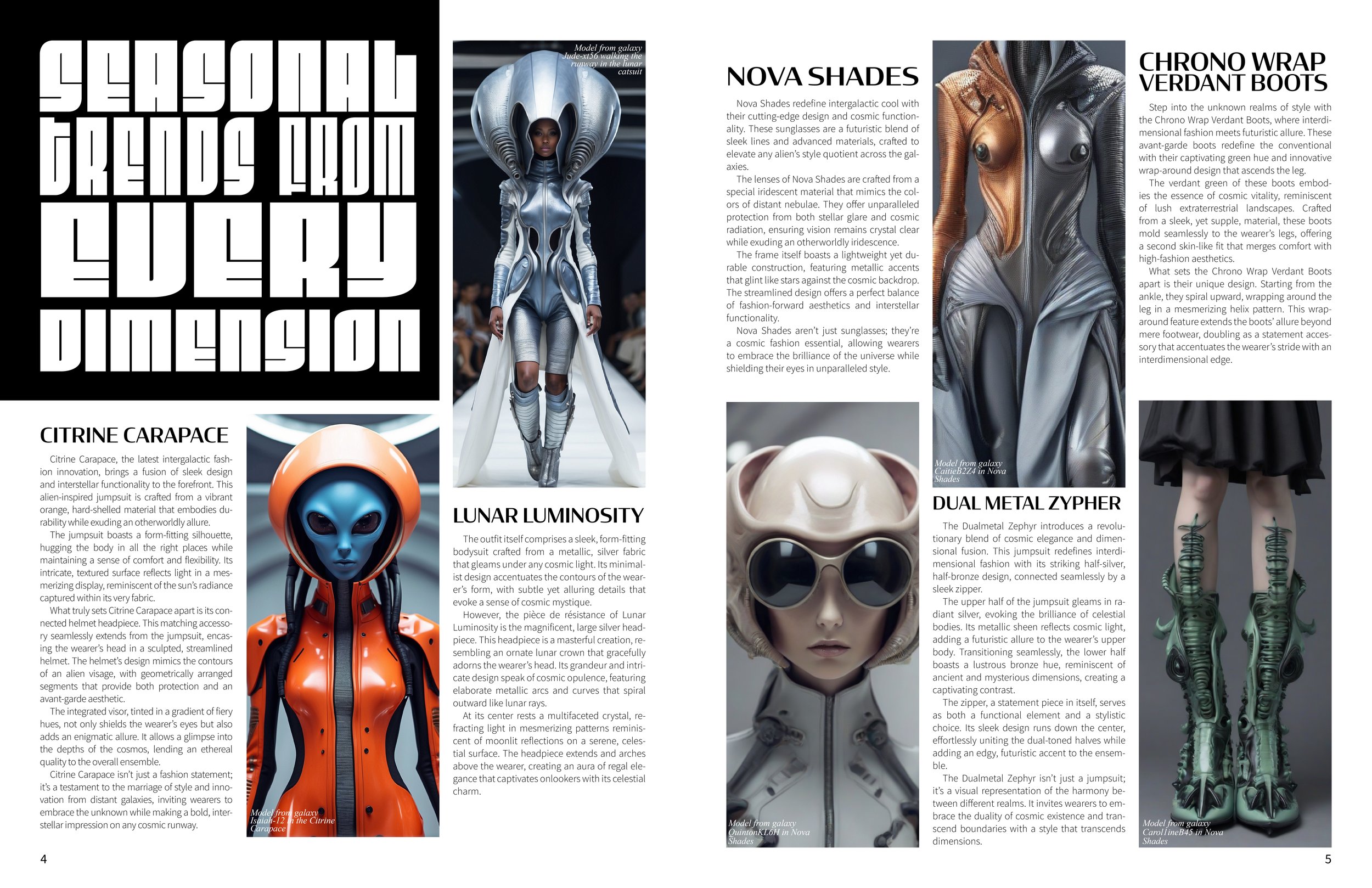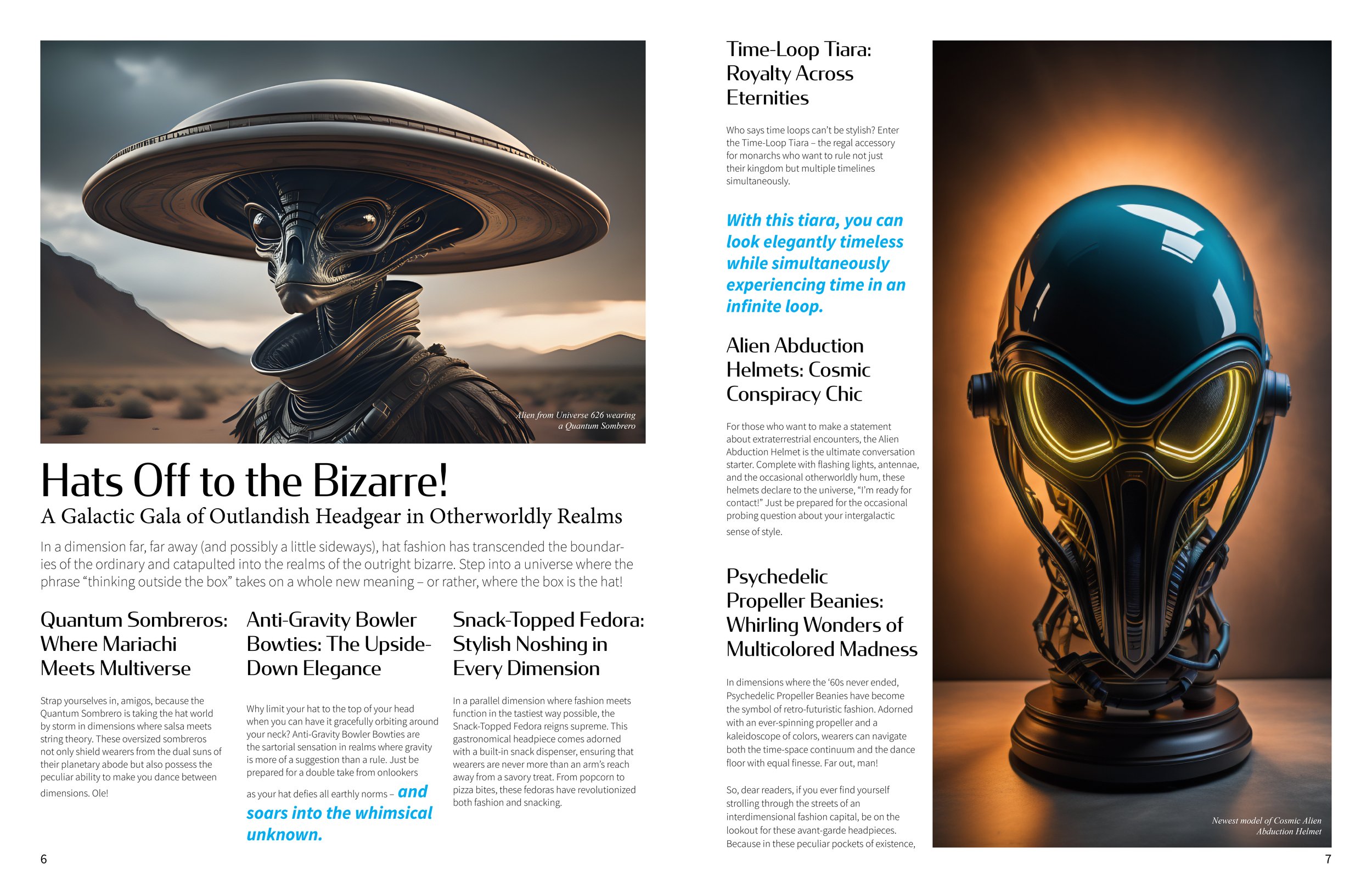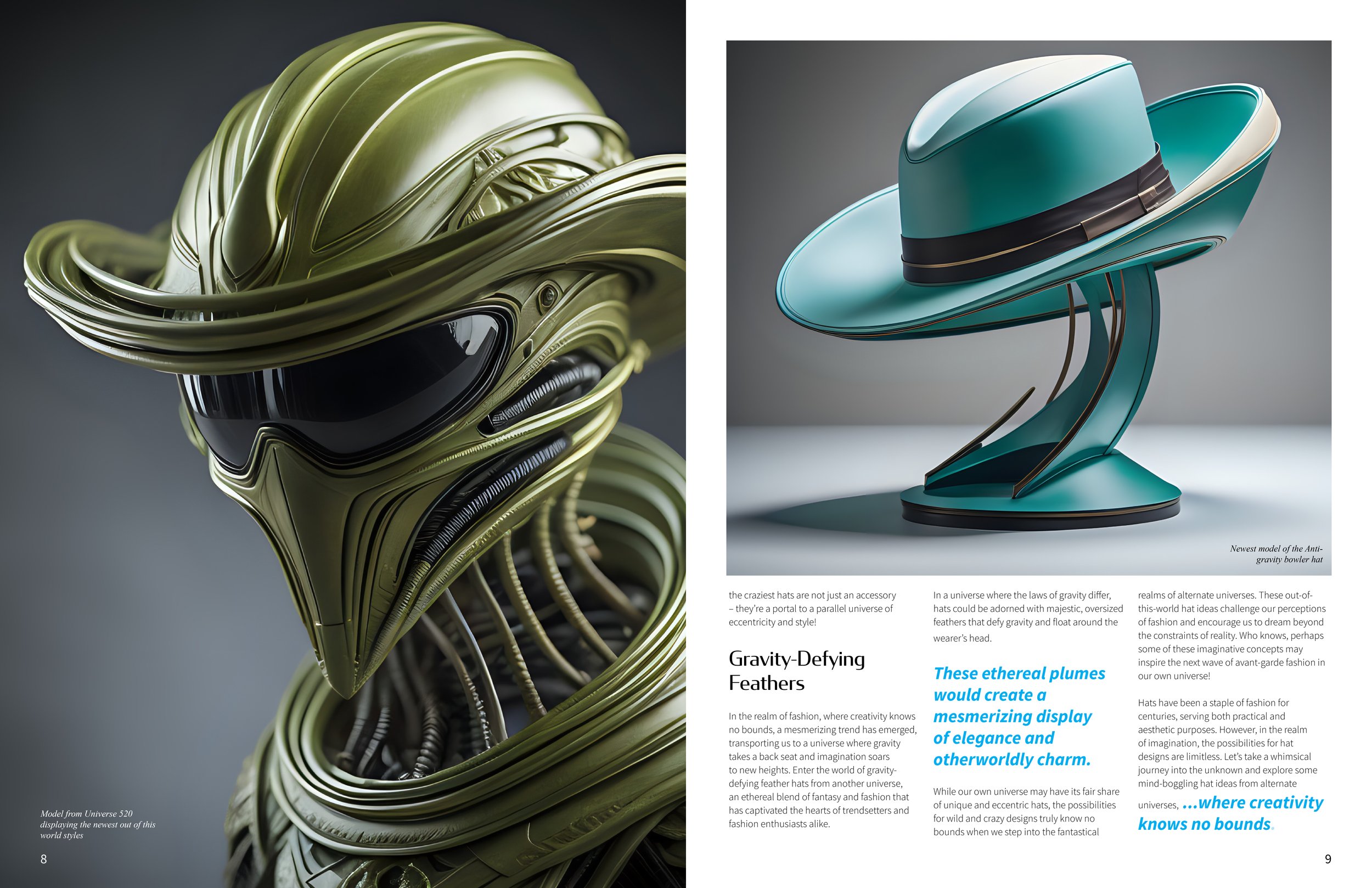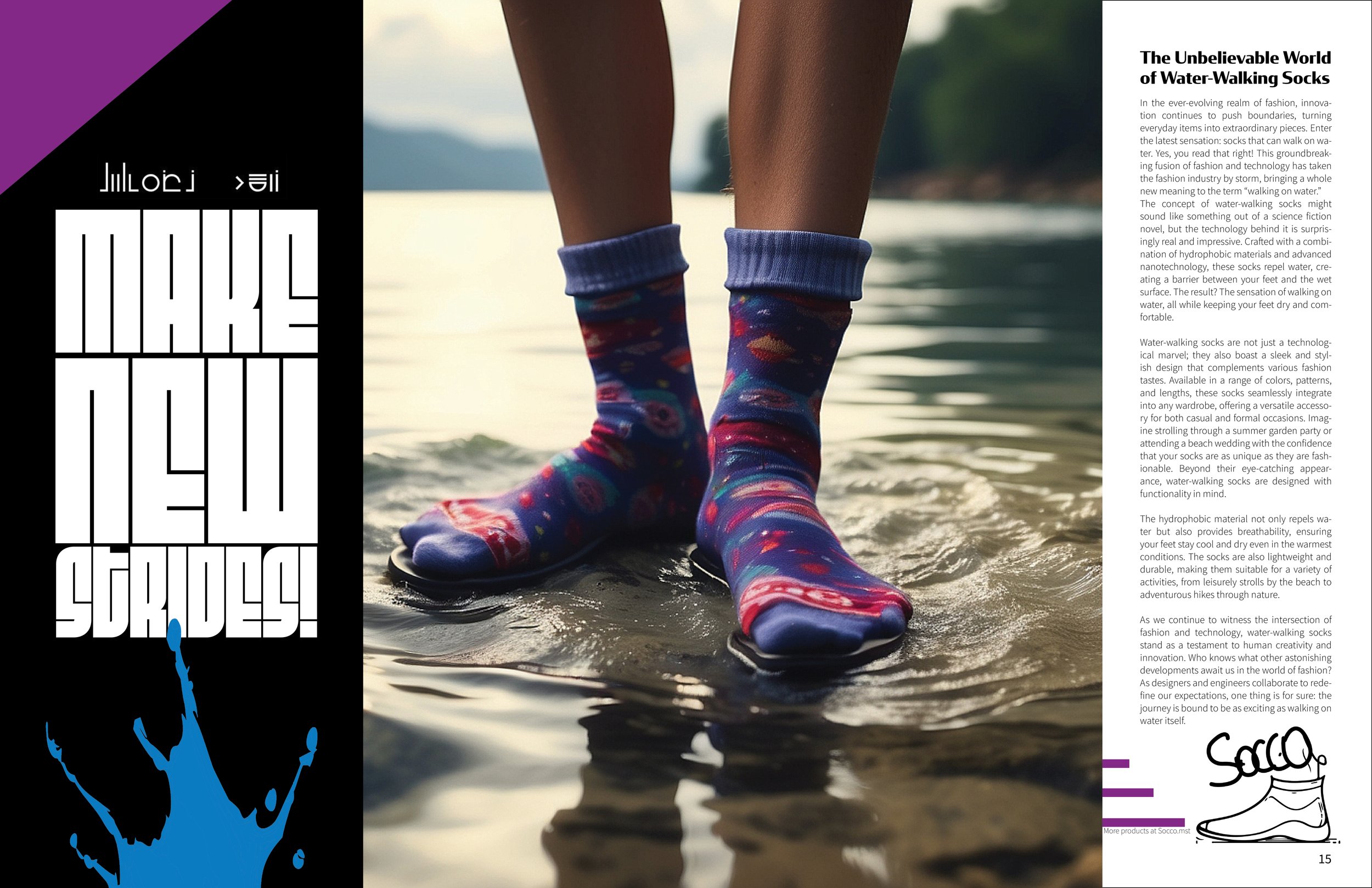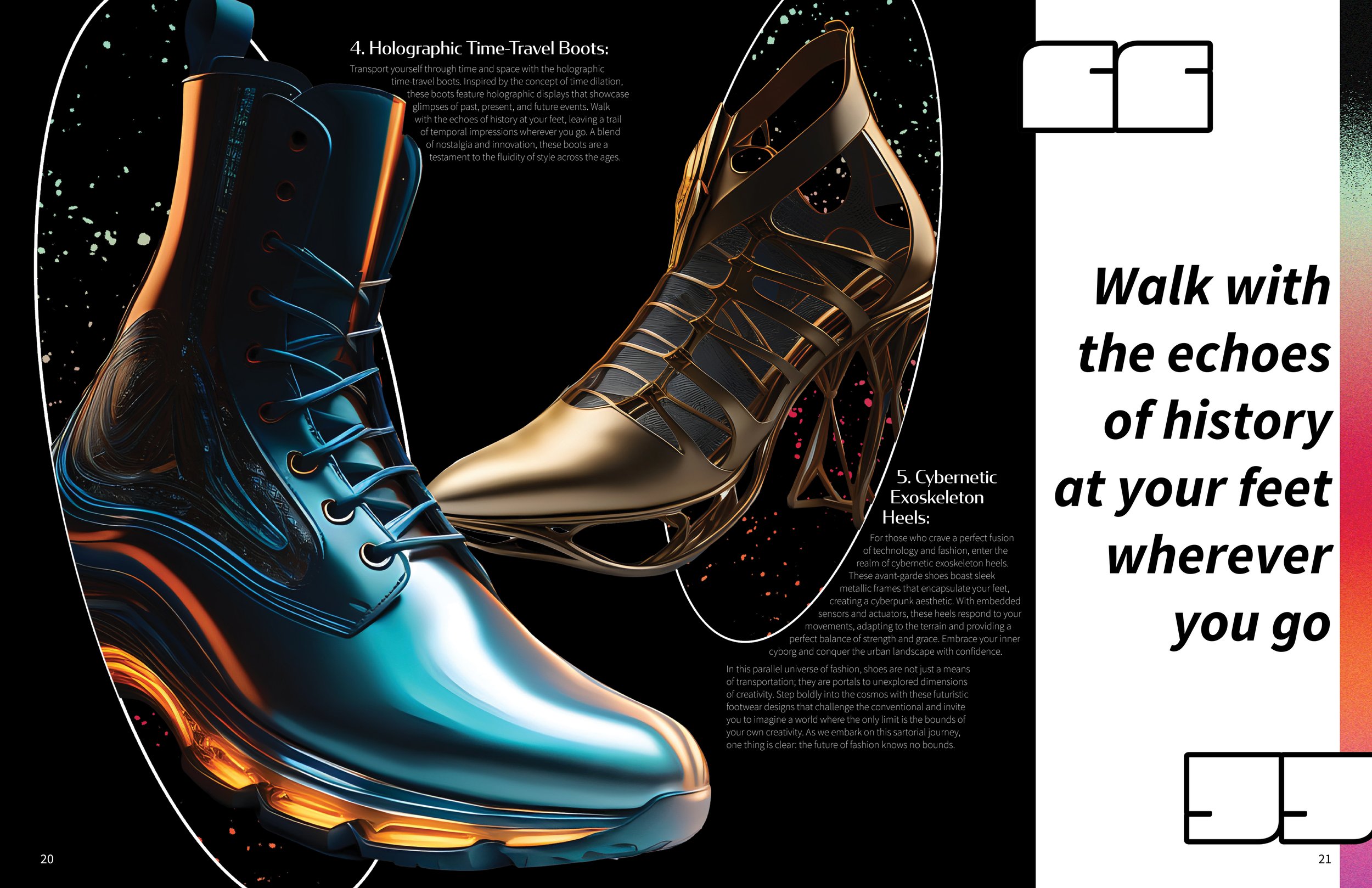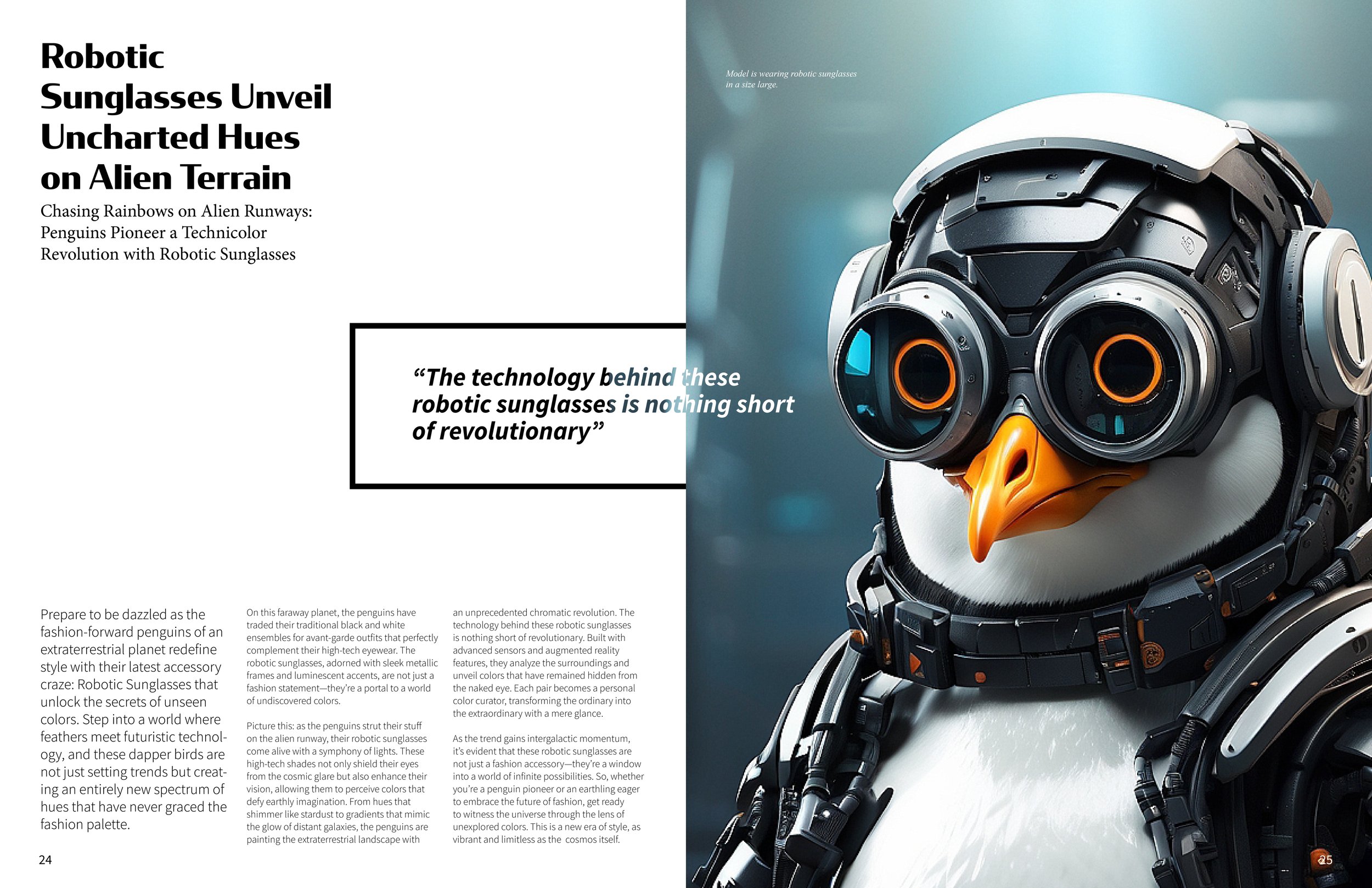Dimensions Magazine
In this culminating project, I worked with a team of six designers to develop a magazine from conception to execution. The group decided on a theme and we divided the project into four steps:
MAGAZINE CONCEPT
My group identified the theme and concept for our magazine. We agreed to create a fashion magazine covering different styles across multiple universes and timelines. Because the magazine covered alternate universes, we had to imagine what fashion trends we would cover. Since our magazine was based on a futuristic, fictitious setting, we wanted our design to reflect this. Each group member came up with potential magazine names, masthead sketches, and cover sketches.

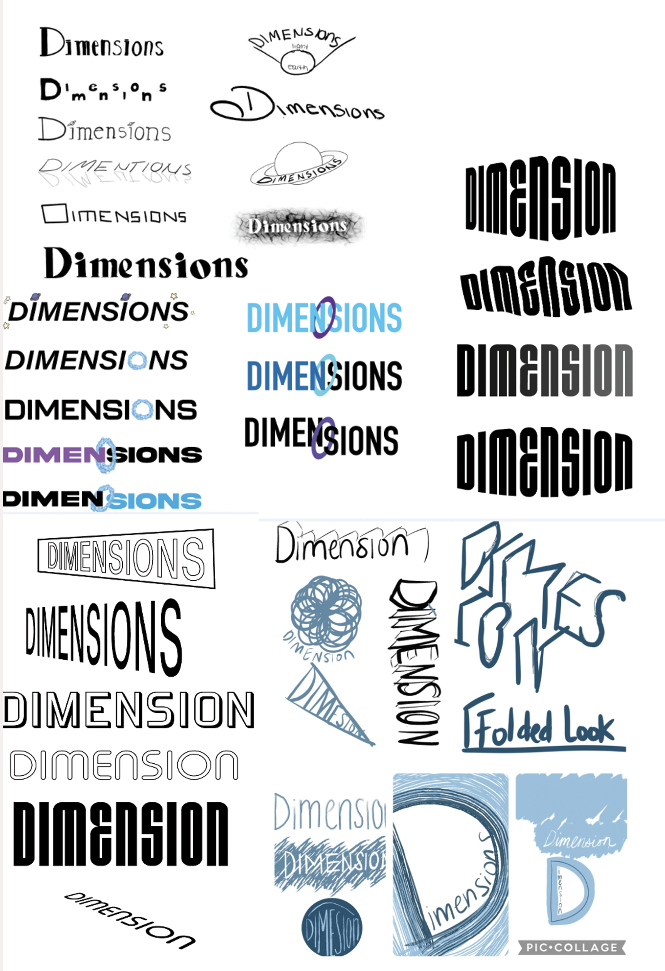

MASTHEAD & COVER
The project's next stage was crafting our magazine's identity by creating a masthead and cover. The typeface chosen for the masthead was between Fit and Condor, two different san-serif typefaces. These two typefaces had the futuristic quality we were looking for and matched the magazine's tone. After further consideration, we decided on Condor for the magazine's masthead and used Fit to highlight different sections of our inside spread. Each group member came up with potential cover designs with a masthead. Below are the final considerations.
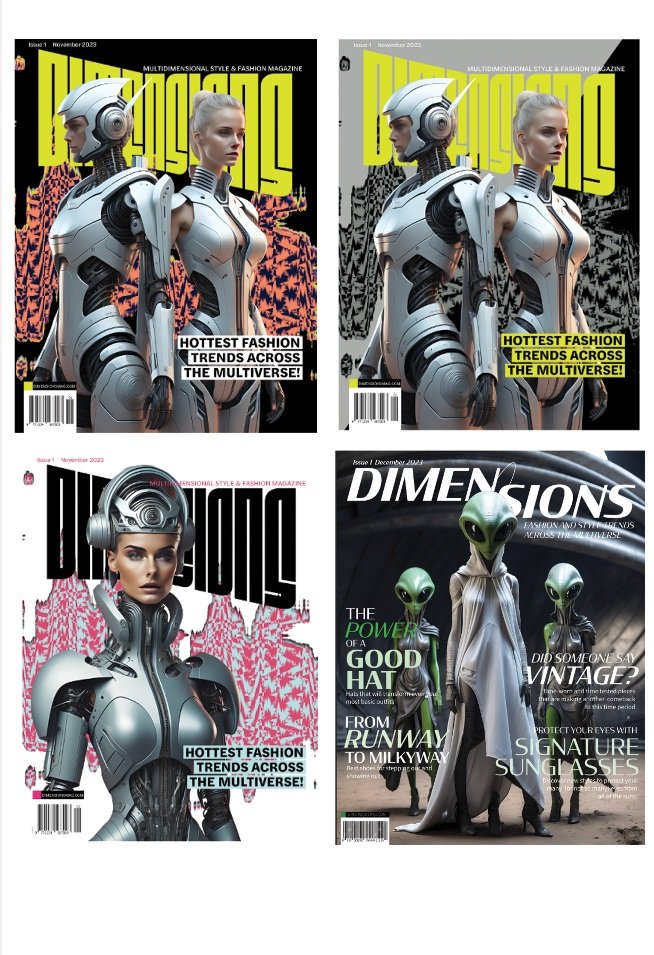
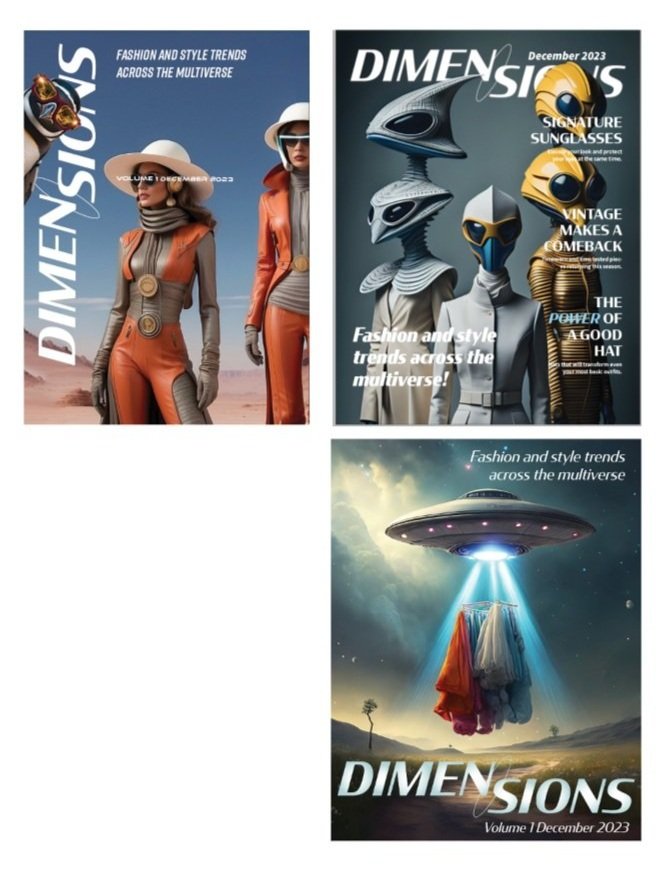
TYPOGRAPHY GUIDE & PRELIMINARY LAYOUTS
Our group established the visual language for the magazine by constructing a typography guide. When considering a typeface for the magazine's inside, we looked for typefaces that paired well together and legible ones. We also had to make sure the typefaces aligned with the characteristics of the magazine. The typefaces we chose were...
Headline: Condor Bold or Fit (if you wanna have two header sections or a header you want to highlight) Subhead: Condor regular or light 12 pt Stand-first (font of first paragraph): Source Sans Variable Extra Light size 13 Pull Quote: Source Sans Variable bold italic Body Copy: Source Sans Variable LIGHT size 9 with 11.25 leading Caption: Times New Roman italic 8 Margins: .5
MAGAZINE SPREADS
Next, groups had to develop magazine layouts using InDesign. These were considered preliminary layouts, indicating the placement of images and text using the typefaces from our guide. Each group member built upon the magazine's identity by creating a four-page spread; pages between spreads had to be cohesive and treated as a single design unit. For my spread, I chose to examine fashion from the Covid-19 era as if it was vintage, we set the time of the magazine as 2030.

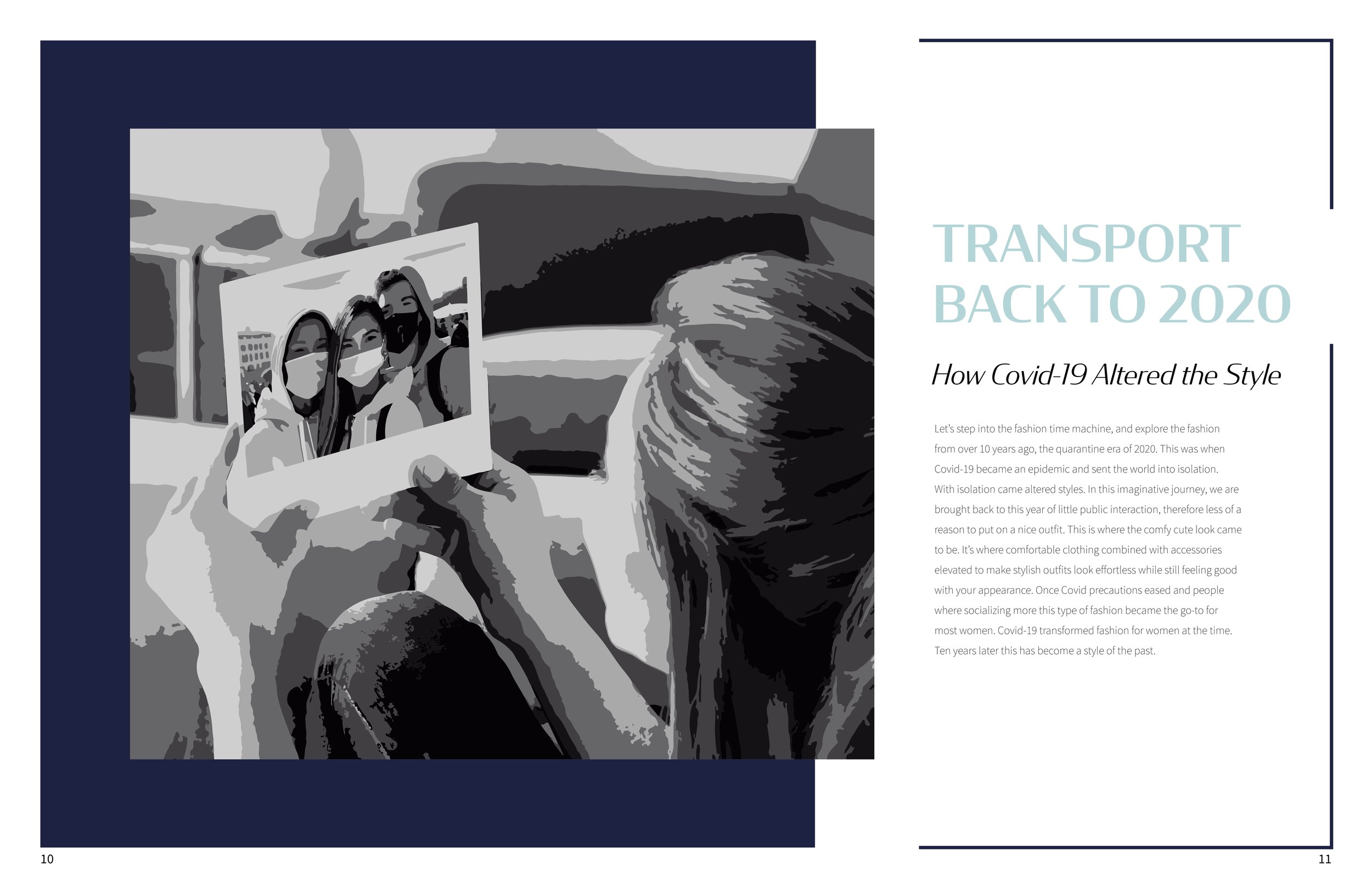
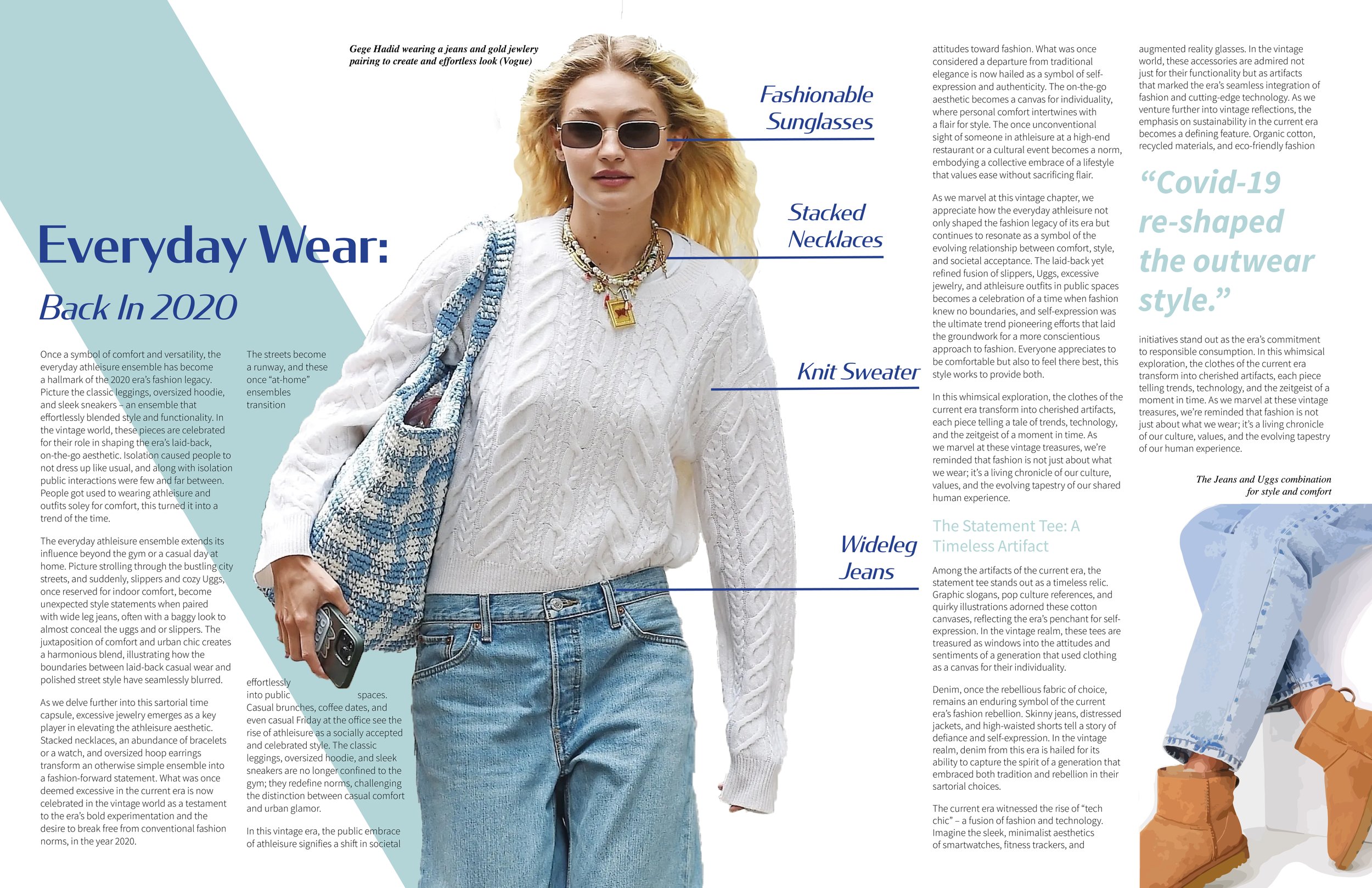

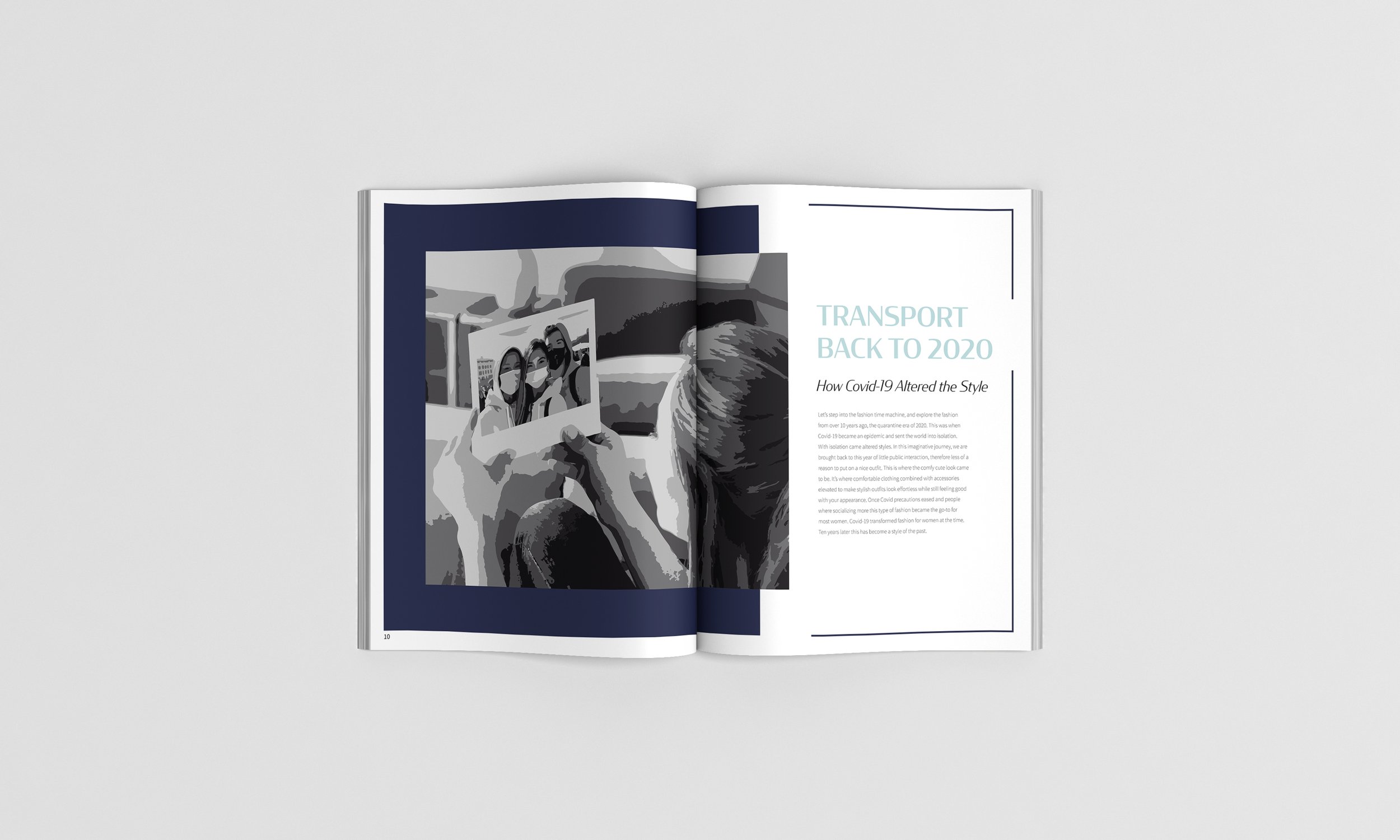
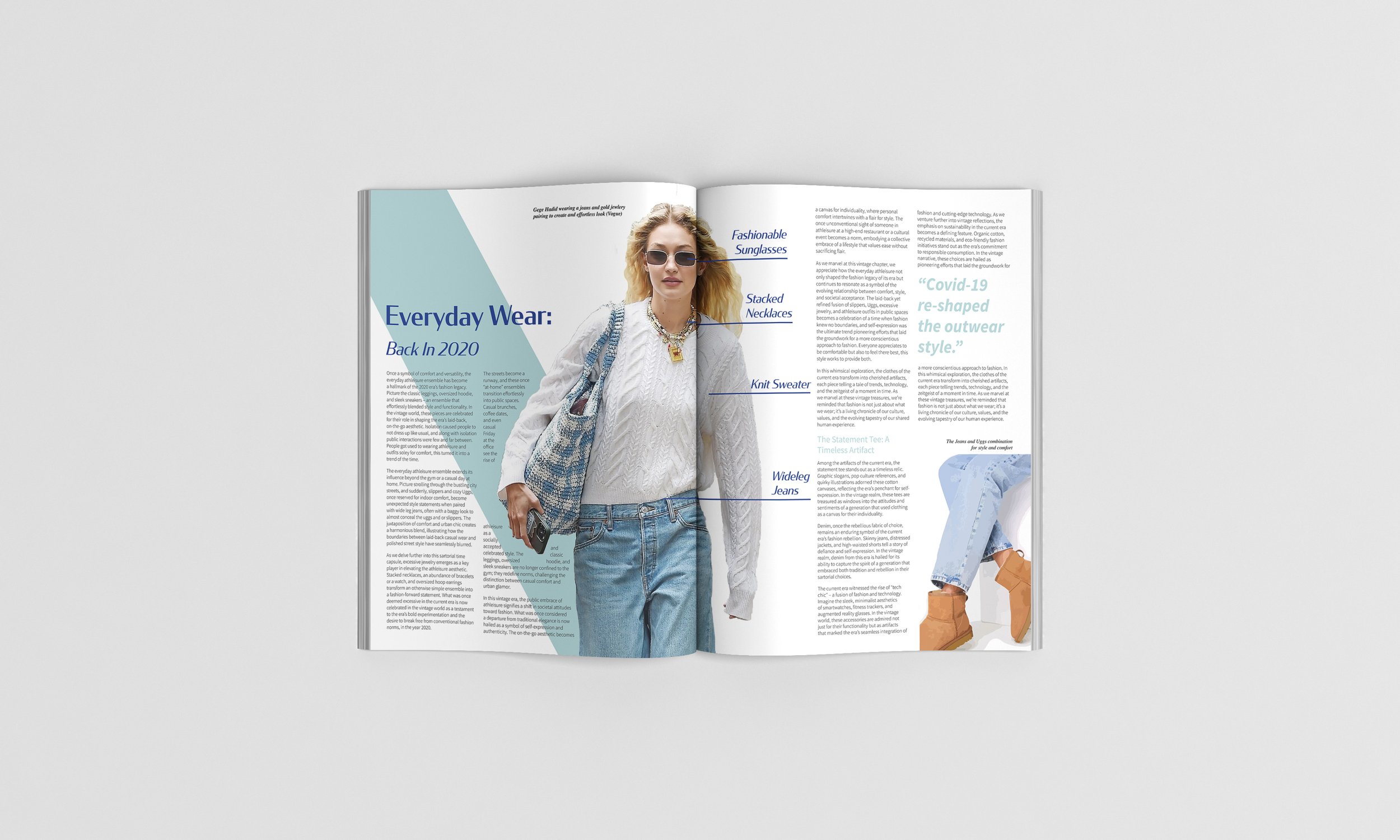
Final Magazine Spreads
